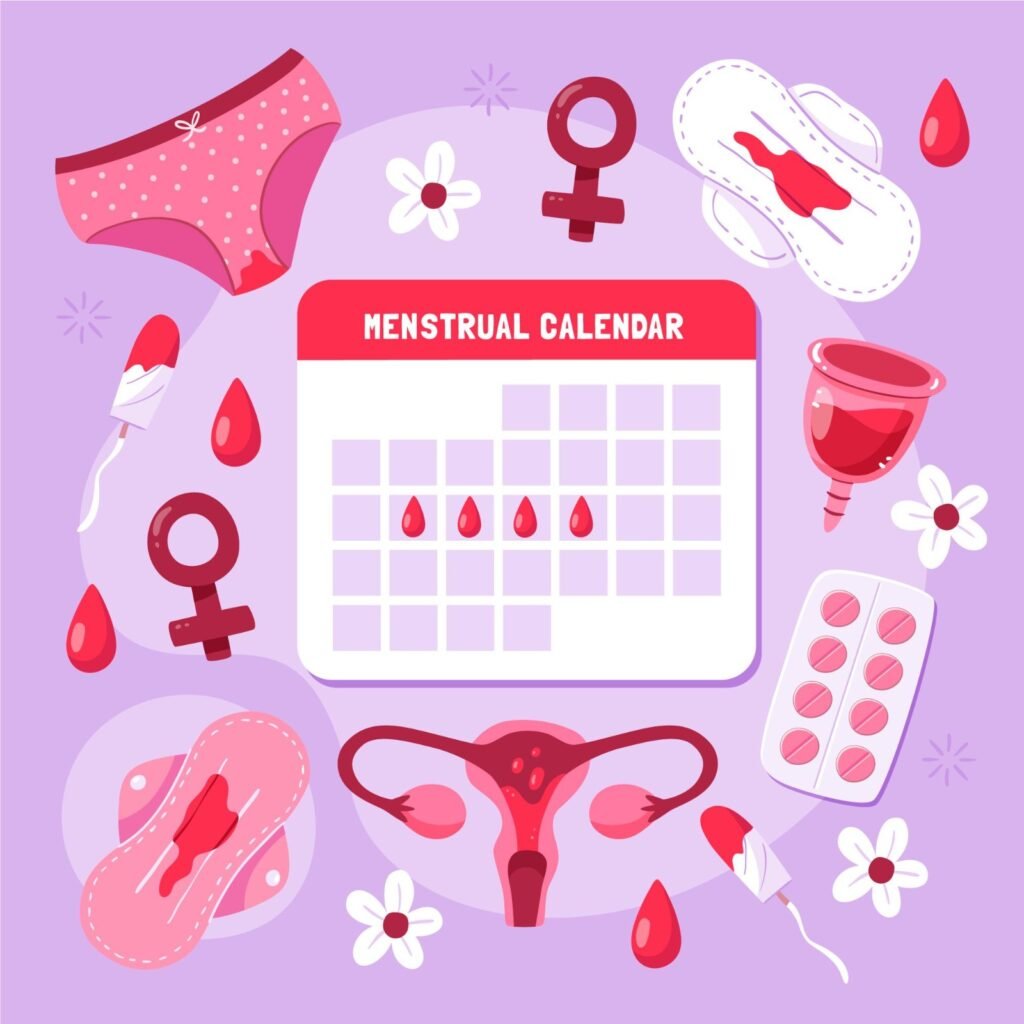
Menstrual health is a cornerstone of a woman’s overall well-being. Your menstrual cycle can reveal much about your hormonal balance, reproductive health, and even emotional state. Yet, for many women, periods remain surrounded by confusion, discomfort, or silence.
This guide aims to offer clear, reliable, and practical insights into how the menstrual cycle works, how to manage symptoms naturally, and when to seek help—so you can take full control of your menstrual and reproductive health.
What Is the Menstrual Cycle?
The menstrual cycle is a natural monthly process that prepares a woman’s body for pregnancy. It typically lasts between 21 to 35 days, with 28 days being average. Each cycle is divided into four key phases:
1. Menstrual Phase (Day 1–5)
This phase starts when the uterus sheds its lining, leading to bleeding. You may experience cramps, fatigue, and mood changes.
2. Follicular Phase (Day 1–13)
Hormones like FSH (follicle-stimulating hormone) stimulate the ovaries to produce follicles. One dominant follicle matures into an egg.
3. Ovulation (Around Day 14)
The matured egg is released from the ovary. This is the most fertile time of the cycle. Some women may experience light spotting or mild pain during ovulation.
4. Luteal Phase (Day 15–28)
After ovulation, the hormone progesterone prepares the uterus for pregnancy. If fertilization doesn’t happen, hormone levels drop and menstruation begins again.
What a Healthy Period Looks Like
Understanding what’s “normal” for your body helps detect potential issues early. A healthy period generally includes:
- Duration: 3–7 days of bleeding
- Flow: Light to moderate bleeding (changing a pad/tampon every 3–5 hours)
- Color: Bright red to dark brown
- Cycle Length: 21–35 days
- Symptoms: Mild cramping, mood swings, and breast tenderness are common
If your experience falls outside of these norms, it’s important to consult a healthcare provider.
Common Menstrual Symptoms and How to Manage Them
Menstruation often brings a range of physical and emotional symptoms known as PMS (Premenstrual Syndrome). Here’s how to manage them naturally:
Physical Symptoms:
- Cramps: Use a heating pad, take magnesium supplements, and stay active.
- Bloating: Reduce salty foods and increase water intake.
- Fatigue: Get enough sleep and avoid excessive sugar and caffeine.
- Headaches: Stay hydrated and try gentle stretches or light exercise.
Emotional Symptoms:
- Irritability or mood swings: Practice mindfulness, get regular sleep, and stay socially connected.
- Anxiety or sadness: Journaling, talking to someone, and maintaining a balanced routine can help.
Menstrual Hygiene Products: What’s Right for You?
Choosing the right menstrual hygiene product is key to comfort and confidence.
Options Include:
- Sanitary Pads: Easy to use and available in different sizes for different flow levels.
- Tampons: Discreet and absorbent but must be changed every 4–6 hours.
- Menstrual Cups: Cost-effective and eco-friendly. Can be worn for up to 12 hours.
- Period Underwear: Reusable and designed to absorb menstrual flow directly.
It’s essential to change products regularly to avoid infections and maintain hygiene.
Tracking Your Cycle
Tracking your menstrual cycle helps predict your period, detect irregularities, and better understand your body.
You can use:
- Calendar tracking
- Cycle tracking apps (like Clue, Flo, or Period Tracker)
- Manual journal entries
Tracking also helps if you’re planning pregnancy or monitoring symptoms like PCOS or endometriosis.
When to See a Doctor
While every woman’s cycle is different, some signs should not be ignored:
- Very heavy bleeding (soaking through pads every hour)
- Cycles shorter than 21 days or longer than 35 days
- Severe cramping that disrupts daily activities
- Spotting between periods
- Missed periods without pregnancy
- Unusual discharge or odor
These symptoms may point to underlying conditions like polycystic ovary syndrome (PCOS), thyroid issues, fibroids, or endometriosis.
Lifestyle Tips for Long-Term Menstrual Health
- Eat a balanced diet rich in fiber, iron, and vitamins
- Exercise regularly to balance hormones and ease PMS
- Get enough sleep (7–9 hours per night)
- Reduce stress through deep breathing, yoga, or journaling
- Avoid smoking and limit alcohol for hormonal balance
Final Thoughts
Menstrual health is not something to be ashamed of—it’s an essential part of your well-being. With the right knowledge, hygiene practices, and support, you can turn your monthly cycle into a time of empowerment and self-awareness.
Start tracking your cycle, listen to your body, and seek help when needed. Your body is speaking—are you listening?
